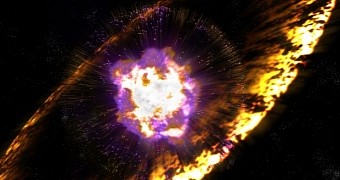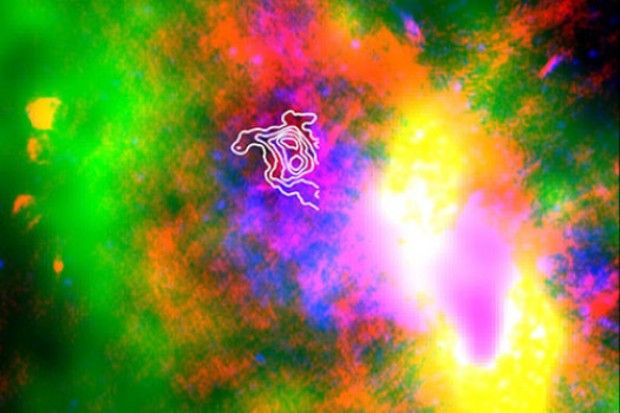Deep inside our home galaxy lurk the remains of a star that exploded millennia ago in a mammoth blast known to astronomers as a supernova. We're talking massive amounts of churning cosmic dust that spilled when the star went kaboom.
To study this cosmic dust and its distribution, astronomers at Cornell University in the US tied an infrared telescope to a modified Boeing 747 jet airliner and then had it map the space region where the supernova occurred eons back.
The data obtained in this manner made it possible for the researchers to produce an image revealing the rather hectic anatomy of the supernova remnants. The image in question, included in the Science Express report detailing this investigation, is available below.
As explained by study lead author Ryan Lau and his colleagues, it's the squiggly white lines visible at the center of the image that contour the ginormous clouds of dust produced and released into interstellar space when the star exploded.
Interestingly enough, the scientists say that their study, focusing on the 10,000-year-old supernova remnant Sagittarius A East near the center of our galaxy, is the first to produce direct observations of the space dust resulting from a supernova.
What do we care about these millennia-old cosmic clouds?
The Cornell University astronomers explain that, as shown by investigations carried out over the years, celestial bodies like our Sun and all the planets that orbit it are made from cosmic dust. Knowing where this dust comes from means knowing where we come from.
Scientists have long suspected that it's supernovae that produce the cosmic dust needed to form new stars and planets orbiting them. However, it has also been argued that whatever dust an exploding star could produce would end up being destroyed by the very blast that birthed it.
The fact that the dust clouds comprising the 10-year-old Sagittarius A East supernova remnant are still alive and kicking after all this time explains why galaxies formed merely 1 billion years after the Big Bang pack loads of star- and planet-forming material.
“There have been no direct observations of any dust surviving the environment of the supernova remnant until now,” researcher Ryan Lau said in a statement. Furthermore, “Our work strongly reinforces the theory that supernovae are producing the dust seen in galaxies of the early universe.”

 14 DAY TRIAL //
14 DAY TRIAL // 

